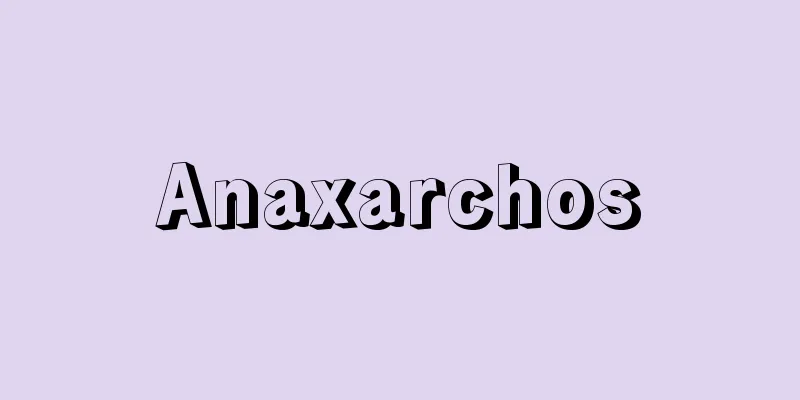Hosso sect

|
This is a Buddhist school that was founded in the Tang Dynasty of China under the disciple of Xuanzang, who introduced a new Yogacara teaching from India. The school's fundamental text is the "Cheng Yushiki Lun" translated by Xuanzang in 659 (4th year of the Xianqing Era), and is characterized by its analysis and study of dharma-sō (the inherent characteristics of phenomena) based on Xuanzang's new translations of the Yogacara Sutras. The school's de facto founder was Xuanzang's direct disciple, Ki (632-682), and it is said that the current "Cheng Yushiki Lun" was translated based on the Goho Shakyamuni commentary at his suggestion. Ki wrote two commentaries on this book, "Shuji of the Cheng Weishi Lun" (Shuji) and "Shouchu Suyo of the Cheng Weishi Lun Zhong Shuyao" (Shuyao), and further selected "Daijōho Ongirinshō" to establish the teachings of the Hosso sect. His criticism was directed at the doctrine of the True Truth of the old translation, but while this doctrine did not make a clear distinction between 'Shinnyo' and various laws and had a strong tendency to be monistic towards 'Shinnyo', the Hosso sect never considered 'Shinnyo' to be various laws, but instead emphasized 'Arayashiki' as the principle of the various laws themselves. One of Ji's disciples was Huinuma, who became the second patriarch of the Hosso sect, and his main work was the Liaoyitang (Liaoyitang) of the Cheng Weishi Lun (Cheng Weishi Lun). His disciples included Zhishu, Yichun, Doyu, and Doken. Zhishu became the third patriarch, and wrote the Enpi (Enpi) of the Cheng Weishi Lun. In the Hosso sect, Ji's Shuji is regarded as the fundamental commentary on the Cheng Weishi Lun, and Ji's Shuyao, which can be considered a supplementary commentary on Shuji, Huinuma's Liaoyitang, and Zhishu's Cheng Weishi Lun Enpi are highly valued as the three commentaries on Weishi Lun. The three generations from Ki to Zhishu are the true lineage of Hosso Buddhism, but Enseki is a representative figure of the other lineage. He was from Silla and was also a disciple of Xuanzang, but before studying under Xuanzang he studied under Hojo and Soben of the Selon sect, so he was well versed in Zhenji's teachings and was heavily influenced by them. His disciples included Dosho and Shengzhuang, also from Silla, and there was a debate between them and those who recognized the true lineage. Hosso Buddhism made a spectacular debut in the Chinese Buddhist world in the early Tang Dynasty, but it did not do well after the third patriarch, and its traditions were instead transmitted to Japan, where it flourished as one of the Six Southern Schools. [Noriaki Hakamaya] JapanIt is said that it was first introduced to Japan by Dosho, who went to China in 653 (Hakuchi 4) and studied directly under Xuanzang. Later, Chitsu and Chida went to China and studied under Xuanzang and Ji, making up the second tradition, and these two traditions are called the Gangoji (Nanji) tradition. The third and fourth traditions were taught by Chiho and Genbo, who studied under Zhishu, and are called the Kofukuji (Northern) tradition. Famous Hosso monks include Gyoki, who also devoted himself to social work, Tokuichi, who criticized Saicho's Ichijo ideology, Jokei, who encouraged the compilation of the Japanese Hosso Yuishiki Ron Dogakusho, and his disciple Ryoben, author of the Kanjin Kakumusho. The influence of Hosso monks gradually declined with the rise of the new Buddhism of the Kamakura period, but its lifeblood is still alive today, mainly at Horyuji Temple, Kofukuji Temple, and Yakushiji Temple. [Noriaki Hakamaya] ``Masafumi Fukaura's ``Yuisigaku Kenkyu'' Volume 2 (1954, Nagata Bunshodo)' ' ▽ ``Akinobu Fukihara, ``Gohoshu Yuishikko'' (1955, Hozokan)'' Source: Shogakukan Encyclopedia Nipponica About Encyclopedia Nipponica Information | Legend |
|
仏教学派。中国唐代、インドより新たな唯識(ゆいしき)教学を将来した玄奘(げんじょう)門下に興った。659年(顕慶4)、玄奘によって訳出された『成唯識論(じょうゆいしきろん)』を根本典籍とし、同じく玄奘による新訳の唯識諸経論に基づいて、法相(現象固有の特質)を分析し研鑽(けんさん)していったところにこの学派の特色がある。事実上の初祖は、玄奘の直弟子基(き)(窺基(きき)、632―682)であり、彼の進言により、護法(ごほう)釈を基準とする現行の『成唯識論』が訳出されることになったと伝えられている。基は、本書に対し、『成唯識論述記』(『述記』)、『成唯識論掌中枢要(しょうちゅうすよう)』(『枢要』)の両注釈書を著し、さらに『大乗法苑義林章(だいじょうほうおんぎりんしょう)』を撰(せん)して法相宗の教学を確立した。その批判の矛先は旧訳(くやく)の真諦(しんだい)系の教義に向けられたが、この系統の教義が真如(しんにょ)と諸法を峻別(しゅんべつ)せず真如に対する一元的志向が強かったのに対し、法相宗は真如が諸法となることはけっしてなく諸法自体の原理としての阿頼耶識(あらやしき)を強調した。基の弟子に法相宗第二祖となった慧沼(えしょう)があり、その主著が『成唯識論了義燈(りょうぎとう)』(『了義燈』)である。彼の弟子には智周(ちしゅう)、義忠(ぎちゅう)、道邑(どうゆう)、道献(どうけん)などがいる。智周が第三祖となった人で、彼は『成唯識論演秘(えんぴ)』を著した。法相宗では、基の『述記』を『成唯識論』に対する根本注疏(ちゅうしょ)とみなし、『述記』の補遺的注釈ともいうべき基の『枢要』、慧沼の『了義燈』、智周の『成唯識論演秘』を唯識三箇(か)の疏(しょ)とよんで重んじた。 基から智周に至る三代がいわば法相宗の正系であるが、異系として代表的な人に円測(えんじき)がいる。彼は新羅(しらぎ)の出身でやはり玄奘門下であるが、玄奘に学ぶ以前に摂論(しょうろん)宗の法常(ほうじょう)や僧弁に受学したためもあって、真諦の教学に明るくその影響も強い。彼の弟子には同じく新羅出身の道証(どうしょう)や勝荘(しょうそう)がおり、正系を認ずる側との間に論争があった。法相宗は、唐初の中国仏教界に華々しくデビューしたが、三祖以後は振るわず、その伝承はかえって日本に伝えられ、南都六宗の一つとして栄えた。 [袴谷憲昭] 日本わが国への最初の伝来は、653年(白雉4)に入唐(にっとう)し直接玄奘について学んだ道昭(どうしょう)によるものとされる。のち智通(ちつう)と智達(ちたつ)が入唐し玄奘と基に学んだのが第二伝で、以上の二伝を元興寺(がんごうじ)(南寺)伝という。第三伝と第四伝は智周に学んだ智鳳(ちほう)らと玄昉(げんぼう)で、これを興福寺(北寺)伝という。法相宗の著名な僧としては、社会事業にも力を尽くした行基(ぎょうき)、最澄(さいちょう)の一乗思想を批判した徳一(とくいち)、日本法相唯識の集大成『成唯識論同学鈔(どうがくしょう)』の編纂(へんさん)を促した貞慶(じょうけい)、その弟子で『観心覚夢鈔(かんじんかくむしょう)』の著者良遍(りょうべん)などがいる。法相宗の教勢は鎌倉新仏教の隆盛とともにしだいに衰えていったが、その命脈は、法隆寺、興福寺、薬師寺などを中心に今日も継承されている。 [袴谷憲昭] 『深浦正文著『唯識学研究』上下(1954・永田文昌堂)』▽『富貴原章信著『護法宗唯識考』(1955・法蔵館)』 出典 小学館 日本大百科全書(ニッポニカ)日本大百科全書(ニッポニカ)について 情報 | 凡例 |
<<: Secret illustrated words of the Hosso sect
>>: Hyalonema sieboldi (Hyalonema sieboldi)
Recommend
Larva - Fairy (English spelling)
In the ontogeny of metazoans, this refers to the ...
Intersubjective constructivism
...This, combined with the knowledge of quantum m...
Liaoyang
A prefecture-level city in central Liaoning Provi...
Jesu Haly
…Years of birth and death unknown. His Latin name...
Sweet summer - Amanatsu
A variety of Natsudaidai developed in Oita Prefect...
Berthollide compound
...A compound that does not follow the law of def...
Empress Suiko - Suikotennou
Year of death: 36.3.7 (628.4.15) Year of birth: 15...
Somateriini
... Merganetta armata (torrent duck) is one speci...
Cantazzaro - Cantazzaro
...It is also worth noting that islands such as S...
Nobeyamahara
A plateau in the eastern part of Nagano Prefecture...
Recharge area - Kanyoiki
The equilibrium line is the long-term average pos...
Zenmui
A monk translator from India. His Sanskrit name i...
Murray - Murray, David
Year of death: 1905.3.6 (1905.3.6) Born: October 1...
Meshed
...Population: 1,964,000 (1994). In Japan, it is ...
Third anniversary of death - Ganzanki
Of these, the two in June and November are especi...




![Takahata [town] - Takahata](/upload/images/67cc1dfe8cbf9.webp)




